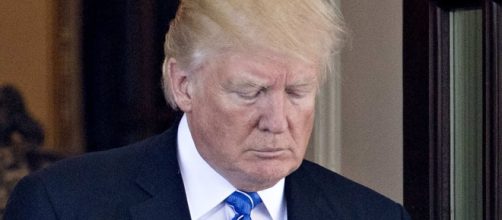The impeachment of U.S. President Donald trump, proposed by Texas Rep. Al Green, has slim chances of prospering in Congress because the House and Senate are controlled by Republicans. However, if lawmakers would listen to public opinion, a significant number of Americans want Trump booted out from office.
Approval rating is down, call for impeachment is up
The political storm over Trump’s Russian ties during the campaign period and how he tried to suppress the information about the Moscow connection is taking its toll on the president’s approval rating.
Following reports that Trump asked then FBI Director James Comey to go easy on former National Security Adviser Michael Flynn who was Trump’s contact person with Russian officials led to more poll respondents disapproving the president.
The latest Politico/Morning Consult Poll said 50 percent disapprove of Trump’s job as president while 42 percent of American voters approve. The 42 percent approval rating is the lowest mark the billionaire received from the pollster in four months of public office, New York Daily News reported.
The survey, which had 2,001 respondents, was conducted on May 12-14, after Trump fired Comey. The firing of Comey got the approval of 35 percent of the voters, but 42 percent disapproved the move.
Another survey held on Tuesday night by the Public Policy Polling, with 692 respondents, said 48 percent of the respondents backed an impeachment proceeding against Trump, while 41 percent do not support the move. The second poll was made before news came out that the president shared classified information to a Russian official and before he asked Comey to end the investigation of Flynn.
There is another way to remove Trump from office
Impeachment, which would likely lose in Congress, is not the only way to remove Trump from office. Time cited a provision in Section 4 of the 25h Amendment. The provision allows the vice president and majority of the cabinet to write Congress that the president is unable to discharge the powers and duties of his office.
On the strength of the letter, power is transferred to the vice president, but the move is subject to additional review by Congress.
In happened in 1919 when then President Woodrow Wilson suffered a stroke on Oct. 2 and was paralyzed. But during that time, Vice President Thomas Marshall was hesitant to assume the presidency until Congress passed a resolution the post was vacant after Wilson’s doctor and wife certified in writing the president was no longer able to discharge the powers and duties of his office.
Nevertheless, even if there is a bipartisan agreement the president in unfit, the president has broad authority to fire his Cabinet and stop the initiative. But another provision in Section 4 gives Congress the power to evaluate how fit the president is for office.
It would remove the need for the Cabinet to concur.
It may be a long shot, but a growing number of experts, including Harvard Law Professor Laurence Tribe and mental health professionals, are now questioning Trump’s mental fitness to lead the nation.


